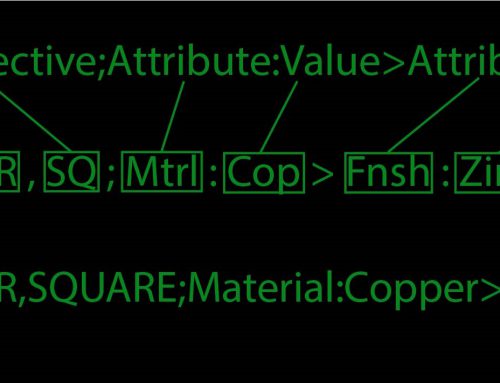In 1758, Carl Linneus published the tenth edition of his book Systema Naturae in which he described his classification of the biological kingdom. Using taxonomic ordering, he aimed to give every living thing a specific name, and a group to belong to.
In the same way, material master data is also broken down with a taxonomic system. By putting materials into smaller and smaller groups, it becomes easier to search for specific materials and to master new materials that are similar to existing materials.
An animal would be classified first in the kingdom “Animalia” to separate it from the “Plantae” class (plants), then into the phylum chordata, (animals with spines). Next it recieves a class of “Mammal”, and then an order of “carnivore,” a family of “Canidae”, a genus of “Canis”, and a Species of “Lupus”. This animal has been put into increasingly more exclusive groups, any of which, if different, would be an entirely diffent animal. After all, there is a big difference between Canis Lupus Familiaris (Common Dog) and Canis Lupus (Grey Wolf)
Material Master taxonomy works the same way. A material may be a fastener: specifically a screw. It has a phillips-head and is a wood screw. It is made of steel and is 5 and inches long. This screw has been classified into increasingly specific groups, and if any category was different, it would be an entirely different material.
- Animalia (All Animals)
- Chordata (Animals with Spines)
- Mammalia (All Mammals)
- Carnivore (Mammals that eat meat)
- Canidae (Wolves and Foxes)
- Canis (Wolves)
- Lupus (Grey Wolf)
- Familiaris (Dogs)
- Lupus (Grey Wolf)
- Canis (Wolves)
- Canidae (Wolves and Foxes)
- Carnivore (Mammals that eat meat)
- Mammalia (All Mammals)
- Chordata (Animals with Spines)
- Fasteners (Nails, Bolts, Screws, and Rivets)
- Screws
- Phillips Head Screws
- Steel Phillips Head Screws
- Steel Phillips-Head Wood Screws
- 5 inch Steel Phillips-Head Wood Screws
- Nickel-Plated 5 inch Steel Phillips-Head Wood Screw
- Nickel-Plated 5 inch Steel Phillips-Head Wood Screw
- 5 inch Steel Phillips-Head Wood Screws
- Steel Phillips-Head Wood Screws
- Steel Phillips Head Screws
- Phillips Head Screws
- Screws
The goal of material taxonomy is to give every material a unique description based on its characteristics. These categories allow reports to be run on anything as general or specific as needed. A foreman might want to see all the different kinds of phillips-head screws used on a certain assembly line or a purchasing manager might need to find out how much was spent on fasteners in Q1 2018.
With taxonmic classification, a huge amount of data can be broken down into meaningful groups that allow decisions to be made and data to become useful, rather than cumbersome to an organization.







Leave A Comment
You must be logged in to post a comment.